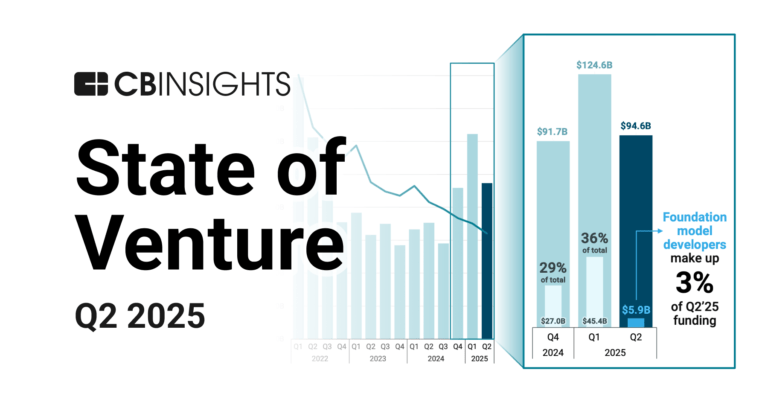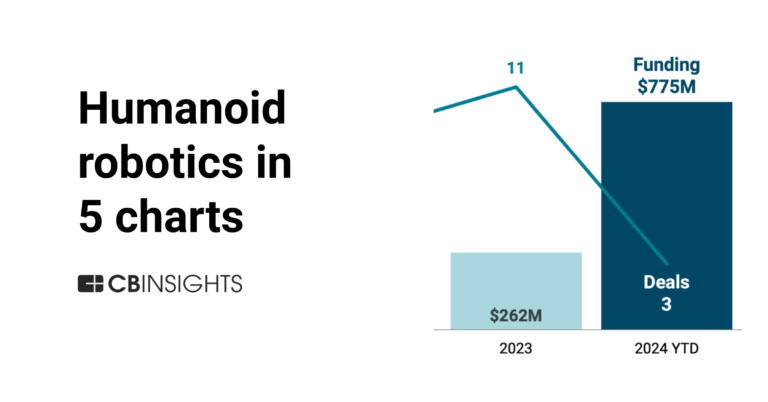
Investments
130Portfolio Exits
22Partners & Customers
10About Defense Advanced Research Projects Agency
The Defense Advanced Research Projects Agency (DARPA) is the central research and development organization for the Department of Defense (DoD). The Agency aims to manage directs basic and applied research and development projects for DoD and pursues research and technology that provide dramatic advances in support of military missions.
Expert Collections containing Defense Advanced Research Projects Agency
Expert Collections are analyst-curated lists that highlight the companies you need to know in the most important technology spaces.
Find Defense Advanced Research Projects Agency in 2 Expert Collections, including Synthetic Biology.
Synthetic Biology
382 items
Defense Tech
125 items
Research containing Defense Advanced Research Projects Agency
Get data-driven expert analysis from the CB Insights Intelligence Unit.
CB Insights Intelligence Analysts have mentioned Defense Advanced Research Projects Agency in 3 CB Insights research briefs, most recently on Jul 10, 2025.

Jul 10, 2025 report
State of Venture Q2’25 Report
Mar 26, 2024
6 applications of humanoid robots across industriesLatest Defense Advanced Research Projects Agency News
Nov 17, 2025
DARPA Drone Challenge: Heavy Lift & Autonomous Flight 26 Breaking News: The robotics landscape is undergoing a rapid transformation, fueled by breakthroughs in design, artificial intelligence, and practical application. From heavy-lift drones challenging logistical limitations to the mass production of humanoid robots, the future of automation is arriving faster than anticipated. This week’s developments showcase not only technological prowess but also a shift towards increasingly versatile and integrated robotic systems. DARPA’s Lift Challenge: Redefining Drone Capabilities Current multirotor drones, while ubiquitous due to their simplicity and affordability, are fundamentally limited by their payload capacity. Typically, they can carry a weight equal to or less than their own. The Defense Advanced Research Projects Agency (DARPA) is actively seeking to overcome this hurdle with the Lift Challenge . The goal? To develop drone technologies capable of transporting payloads exceeding four times their weight – a game-changer for industries ranging from logistics and construction to disaster relief and defense. This ambitious project promises to unlock entirely new applications for unmanned aerial vehicles. Humanoid Robotics: From Prototype to Production A significant milestone has been reached in humanoid robotics. UBTECH has completed the first mass delivery of its Walker S2 humanoid robots to partners. This isn’t just about building robots; it’s about scaling production and integrating these advanced machines into real-world scenarios. While the delivery method raises a few eyebrows – shipping robots *on* robots? – it underscores the accelerating pace of development in this field. Pro Tip: The success of humanoid robots hinges not just on their physical capabilities, but also on their ability to navigate complex social environments and interact safely with humans. Beyond Hands: Innovative Approaches to Robotic Manipulation Conventional wisdom might suggest equipping robots with hands for enhanced dexterity. However, researchers at ArcLab are exploring a different approach: teaching robots to lasso objects. This innovative technique demonstrates that effective manipulation doesn’t always require mimicking human anatomy. It opens up possibilities for simpler, more robust, and potentially more efficient robotic grasping systems. What other unconventional methods might unlock new levels of robotic dexterity? Robotics in Logistics: Streamlining Operations with ‘Virtual Conveyors’ The integration of robotics into logistics is gaining momentum. Robust.ai ’s Carter robot is being deployed by Saddle Creek to optimize tote delivery in a beauty product fulfillment center. Carter functions as a flexible, non-integrated “virtual conveyor,” streamlining material flow without the need for costly and inflexible fixed infrastructure. This demonstrates the power of adaptable robotics to enhance efficiency and responsiveness in complex supply chains. The Rise of Collaborative Robotics and AI-Powered Automation Recent advancements aren’t limited to single-robot solutions. Researchers at DRAGON Lab have achieved a breakthrough in aerial-ground robot teamwork, utilizing a language-vision hierarchy for long-horizon navigation and manipulation. This signifies a move towards more sophisticated, coordinated robotic systems capable of tackling complex tasks. Furthermore, the development of Behavioral Foundation Models (BFM-Zero) by BFM-Zero promises to unify diverse control tasks for humanoid robots under a single, adaptable policy. This could dramatically simplify the programming and deployment of these versatile machines. The future of work is also being reshaped. AgileX ’s collaborative robots (cobots) are poised to automate manual labor tasks, offering increased productivity and potentially reshaping job roles. Meanwhile, KIMLAB’s MOMO (Mobile Object Manipulation Operator) continues to evolve, with its design and functionalities recently published in IEEE Robotics & Automation Magazine. Even agricultural applications are benefiting from robotic innovation. Ingenuity Labs is deploying robots for agricultural research, initially focusing on grape harvesting. And Extend Robotics is developing robotic solutions for vineyard management, offering a less grape-consuming alternative to human pickers. The question remains: how far can we push the boundaries of robotic mobility and manipulation? Finally, Optimal Robotics Lab recently unveiled NEO, a new humanoid robot, highlighting the continued investment and development in this exciting field. The lack of visible emotion from the presenter during the announcement only adds to the intriguing, and slightly unsettling, nature of these advancements. Frequently Asked Questions About Robotics Did You Know? The term “robot” originates from the Czech word “robota,” meaning forced labor or drudgery. What is the primary limitation of current multirotor drones? Current drones are limited by their low payload-to-weight ratio, typically 1:1 or less. What is the goal of the DARPA Lift Challenge? The DARPA Lift Challenge aims to develop drones capable of carrying payloads more than four times their weight. What are Behavioral Foundation Models (BFMs) in robotics? BFMs are designed to unify diverse control tasks for humanoid robots under a single, adaptable policy. How are robots being used in logistics and fulfillment centers? Robots like Carter from Robust.ai are being used as flexible “virtual conveyors” to streamline material flow. What is the potential impact of collaborative robots (cobots) on the workforce? Cobots have the potential to automate manual labor tasks, increasing productivity and potentially reshaping job roles. What is the significance of the recent mass delivery of UBTECH Walker S2 robots? This marks a significant step towards the widespread adoption and integration of humanoid robots into real-world applications. How are robots being used in agriculture? Robots are being developed for tasks such as grape harvesting and vineyard management, offering potential benefits in efficiency and labor costs. The advancements showcased this week represent a pivotal moment in robotics. As these technologies mature and become more accessible, we can expect to see even more transformative applications emerge across various industries. What ethical considerations should guide the development and deployment of these increasingly capable robots? And how will these advancements impact the future of work and human-robot collaboration? Share your thoughts in the comments below! Don’t forget to share this article with your network to spark further discussion about the exciting future of robotics. Share this:
Defense Advanced Research Projects Agency Investments
130 Investments
Defense Advanced Research Projects Agency has made 130 investments. Their latest investment was in Extellis as part of their Grant on November 10, 2025.
Defense Advanced Research Projects Agency Investments Activity

Date | Round | Company | Amount | New? | Co-Investors | Sources |
|---|---|---|---|---|---|---|
11/10/2025 | Grant | Extellis | $2.3M | Yes | 4 | |
6/9/2025 | Grant - V | Aarno Labs | No | 2 | ||
6/4/2025 | Grant | Texas A&M University | $1.6M | Yes | 1 | |
3/7/2025 | Grant | |||||
1/7/2025 | Grant |
Date | 11/10/2025 | 6/9/2025 | 6/4/2025 | 3/7/2025 | 1/7/2025 |
|---|---|---|---|---|---|
Round | Grant | Grant - V | Grant | Grant | Grant |
Company | Extellis | Aarno Labs | Texas A&M University | ||
Amount | $2.3M | $1.6M | |||
New? | Yes | No | Yes | ||
Co-Investors | |||||
Sources | 4 | 2 | 1 |
Defense Advanced Research Projects Agency Portfolio Exits
22 Portfolio Exits
Defense Advanced Research Projects Agency has 22 portfolio exits. Their latest portfolio exit was Xanadu on November 03, 2025.
Date | Exit | Companies | Valuation Valuations are submitted by companies, mined from state filings or news, provided by VentureSource, or based on a comparables valuation model. | Acquirer | Sources |
|---|---|---|---|---|---|
11/3/2025 | Acq - Pending | Crane Harbor Acquisition | 3 | ||
9/8/2025 | Acq - Pending | Churchill Capital X | 4 | ||
1/5/2023 | Acquired | 18 | |||
Date | 11/3/2025 | 9/8/2025 | 1/5/2023 | ||
|---|---|---|---|---|---|
Exit | Acq - Pending | Acq - Pending | Acquired | ||
Companies | |||||
Valuation | |||||
Acquirer | Crane Harbor Acquisition | Churchill Capital X | |||
Sources | 3 | 4 | 18 |
Defense Advanced Research Projects Agency Partners & Customers
10 Partners and customers
Defense Advanced Research Projects Agency has 10 strategic partners and customers. Defense Advanced Research Projects Agency recently partnered with Atom Computing on November 11, 2025.
Date | Type | Business Partner | Country | News Snippet | Sources |
|---|---|---|---|---|---|
11/7/2025 | Vendor | United States | BERKELEY , Calif. , Nov. 7 , 2025 / PRNewswire / -- Atom Computing has been selected by the Defense Advanced Research Projects Agency to proceed to the next stage of exploring how Atom Computing 's highly-scalable neutral atom technology will realize utility-scale quantum computing in the near term . | 2 | |
11/6/2025 | Vendor | United States | DARPA Selects QuEra for Stage B of Quantum Benchmarking Initiative (QBI) `` We 're honored that DARPA 's experts determined our neutral-atom platform merits continued investment after close collaboration during Stage A , '' said Andy Ory , CEO of QuEra Computing . | 1 | |
11/6/2025 | Vendor | United Kingdom | Quantum Motion Selected by DARPA for Second Phase of the Quantum Benchmarking Initiative San Francisco -- Nov. 6 , 2025 -- Quantum Motion has been selected by the U.S. Defense Advanced Research Projects Agency to advance to Stage B of the Quantum Benchmarking Initiative . | 1 | |
10/8/2025 | Vendor | ||||
10/3/2025 | Vendor |
Date | 11/7/2025 | 11/6/2025 | 11/6/2025 | 10/8/2025 | 10/3/2025 |
|---|---|---|---|---|---|
Type | Vendor | Vendor | Vendor | Vendor | Vendor |
Business Partner | |||||
Country | United States | United States | United Kingdom | ||
News Snippet | BERKELEY , Calif. , Nov. 7 , 2025 / PRNewswire / -- Atom Computing has been selected by the Defense Advanced Research Projects Agency to proceed to the next stage of exploring how Atom Computing 's highly-scalable neutral atom technology will realize utility-scale quantum computing in the near term . | DARPA Selects QuEra for Stage B of Quantum Benchmarking Initiative (QBI) `` We 're honored that DARPA 's experts determined our neutral-atom platform merits continued investment after close collaboration during Stage A , '' said Andy Ory , CEO of QuEra Computing . | Quantum Motion Selected by DARPA for Second Phase of the Quantum Benchmarking Initiative San Francisco -- Nov. 6 , 2025 -- Quantum Motion has been selected by the U.S. Defense Advanced Research Projects Agency to advance to Stage B of the Quantum Benchmarking Initiative . | ||
Sources | 2 | 1 | 1 |
Loading...

